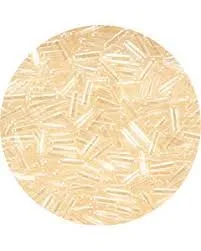
Nov . 09, 2024 16:18 Back to list
Understanding HPMC and Its Applications in Various Industries
Understanding HPMC A Comprehensive Overview
Hydroxypropyl Methylcellulose (HPMC) is a versatile and widely used cellulose derivative that has garnered significant attention in various industries, including pharmaceuticals, food, construction, and personal care. As a modified form of cellulose, HPMC is produced through the chemical reaction of cellulose with propylene oxide and methyl chloride. This unique composition gives HPMC a variety of properties that make it an essential ingredient in numerous applications.
One of the standout features of HPMC is its solubility in water. Unlike traditional cellulose, which is not soluble, HPMC can dissolve in cold or hot water, forming a viscous gel. This property makes it an excellent thickening agent, emulsifier, and film-forming agent. In the pharmaceutical industry, HPMC is commonly used in the formulation of tablets and controlled-release medications. It helps to improve the viscosity of the drug formulation, ensuring that the active ingredients are released at a consistent rate.
.
In the construction sector, HPMC plays a crucial role in modern building materials. It is commonly incorporated into cement-based products such as tile adhesives, plasters, and wall putties. The inclusion of HPMC enhances workability and provides excellent adhesion properties, which are essential for durable and effective construction materials. Furthermore, its water-retention capacity helps maintain moisture within the mixture, preventing early drying and cracking.
hpmc چیست

Beyond traditional applications, HPMC has shown promise in innovative areas such as 3D printing and biodegradable materials. In 3D printing, HPMC can be used as a supportive material, ensuring the stability of structures during the printing process. Its biodegradability also aligns with the growing demand for sustainable materials, making it an attractive option for environmentally-conscious manufacturers looking to reduce their ecological footprint.
HPMC is recognized for its non-toxic and hypoallergenic properties, making it suitable for use in personal care products such as lotions, shampoos, and cosmetics. In these formulations, HPMC acts as a thickener and stabilizer, contributing to the sensory experience while ensuring the uniform distribution of active ingredients.
Despite its benefits, it is essential to consider the sourcing and production processes of HPMC to ensure sustainability. The primary raw material for HPMC production is cellulose, typically derived from wood pulp or cotton. It is imperative that manufacturers adhere to environmentally responsible practices, sourcing cellulose from sustainably managed forests or using alternative plant sources to mitigate ecological impact.
In conclusion, HPMC (Hydroxypropyl Methylcellulose) is a multifaceted compound that has established itself as a critical ingredient across various industries. Its exceptional solubility, thickening ability, non-toxic nature, and adaptability make it indispensable in pharmaceuticals, food, construction, and personal care applications. As industries trend towards sustainability, the demand for HPMC will likely continue to grow, prompting advancements in its formulation and application. By recognizing the versatility of HPMC, industries can harness its potential while prioritizing consumer safety and environmental responsibility. As we look to the future, the role of HPMC in scientific and technological innovations will undoubtedly expand, contributing to improved products and processes that benefit society as a whole.
-
Versatile Hpmc Uses in Different Industries
NewsJun.19,2025
-
Redispersible Powder's Role in Enhancing Durability of Construction Products
NewsJun.19,2025
-
Hydroxyethyl Cellulose Applications Driving Green Industrial Processes
NewsJun.19,2025
-
Exploring Different Redispersible Polymer Powder
NewsJun.19,2025
-
Choosing the Right Mortar Bonding Agent
NewsJun.19,2025
-
Applications and Significance of China Hpmc in Modern Industries
NewsJun.19,2025







